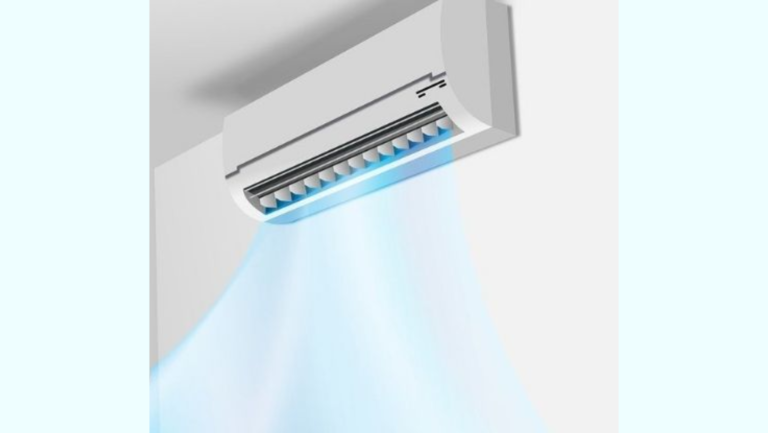Unlock the Mystery: Find Your Ac High Pressure Switch Location
The AC high-pressure switch is typically located on the high-pressure line near the AC compressor. The switch is responsible for detecting excessive high pressure in the system and shutting off the compressor to prevent damage.
Introducing the topic of the AC high-pressure switch, it plays a crucial role in the functioning of an air conditioning system. By monitoring the pressure levels in the system, it ensures that the compressor operates safely and efficiently. We will explore the location of the AC high-pressure switch and provide some insights into its purpose and operation.
Whether you are a mechanic working on an AC system or a curious car owner, understanding the high-pressure switch can help diagnose and resolve AC issues effectively. So, let’s delve into the details of where to find the AC high-pressure switch and its significance in maintaining optimal AC performance.
Understanding The Ac High Pressure Switch (hps)
The AC high pressure switch (HPS) is a vital component of the air conditioning system. It plays a critical role in ensuring proper AC system performance. The HPS functions by monitoring the refrigerant pressure in the system and preventing the compressor from operating under high pressure conditions.
The HPS is responsible for safeguarding the AC system from potential damage due to excessive pressure. If the pressure exceeds the safe limit, the switch interrupts power to the compressor, preventing further operation until the pressure decreases to normal levels.
By monitoring the pressure, the HPS helps prevent issues such as refrigerant leaks, compressor damage, and system malfunction. It is important to locate and maintain the HPS properly to ensure its efficient functionality. Regular inspection and testing of the switch are necessary to identify any faults or defects that might affect the AC performance.
In conclusion, understanding the function and importance of the AC high pressure switch is crucial to maintaining the overall system performance and preventing potential damage.
Signs Of A Faulty Ac High Pressure Switch
AC High Pressure Switch Location
Signs of a Faulty AC High Pressure Switch:
- AC system not cooling effectively
- AC compressor frequently cycling on and off
- AC blowing hot air instead of cool air
- AC system not turning on at all
Common symptoms indicating a faulty HPS:
- Check engine light illuminated
- High pressure readings on AC gauges
- Leaks noted around the switch
How to diagnose a malfunctioning HPS:
- Inspect the electrical connections
- Test the switch with a multimeter
- Check for proper refrigerant levels
- Examine the switch for physical damage
Locating The Ac High Pressure Switch In Your Vehicle
AC High Pressure Switch (HPS) is an important component in the air conditioning system of your vehicle. Its location may vary depending on the make and model of your car. Here is a general idea of where you can find the HPS in different car models:
| Car Make | High Pressure Switch Location |
|---|---|
| Toyota Camry | Located on the receiver drier or near the condenser |
| Ford Focus | Usually positioned on the high-pressure line between the AC compressor and condenser |
| Honda Civic | Generally found near the compressor or on the high-pressure line |
Keep in mind that these are general guidelines, and it’s always recommended to consult your vehicle’s manual or seek professional assistance to locate the AC High Pressure Switch in your specific make and model. Each car may have additional considerations for the positioning of the HPS. It’s important to accurately identify the switch’s location to diagnose and address any issues related to the AC system efficiently.
Methods For Locating The Hps
Methods for Locating the HPS:
Visual inspection of the engine compartment:
Identifying the HPS based on its appearance and design. Checking for any visible labels or markings.
Consultation of the vehicle’s owner manual:
Locating the relevant section in the manual. Following the provided instructions or diagrams.
Utilizing online resources and forums:
Accessing car-specific forums and communities. Receiving guidance from experienced individuals.
Seeking professional assistance from mechanics or technicians:
Taking the vehicle to a reputable auto repair shop. Discussing the HPS location with qualified professionals.
Precautions To Consider When Locating The Hps
Precautions to Consider When Locating the HPS
Importance of safety measures during the search:
- Ensure the power supply is disconnected before starting the search to avoid electrical hazards.
- Wear appropriate safety gear such as gloves and goggles to protect yourself from potential injuries.
- Be cautious of hot surfaces and moving parts of the AC system to prevent burns or accidents.
- Follow manufacturer’s instructions and guidelines for safe handling and locating of the HPS.
Recommendations for avoiding potential damage to the AC system:
- Use a voltage tester to confirm that the power is truly off before touching any components.
- Avoid applying excessive force or using sharp tools that may cause damage to the HPS or surrounding components.
- Take note of the HPS location for future reference and easy access for maintenance or troubleshooting.
- If unsure about the location or handling, consult a professional technician to prevent accidental damage to the AC system.
Common Misconceptions And Pitfalls To Avoid
Common Misconceptions and Pitfalls to Avoid
Dispelling myths surrounding the HPS location
There are certain misconceptions about the AC high pressure switch (HPS) location that can lead to confusion during the search process. One common misunderstanding is that the HPS is always found on the compressor itself. However, this is not always the case as the location can vary depending on the make and model of the vehicle.
Another pitfall to avoid is assuming that the HPS is easily accessible and visible. In reality, it can be hidden or tucked away in hard-to-reach areas, making it a challenge to locate. Some vehicles may have multiple pressure switches, adding to the confusion.
When searching for the HPS, it is important to consult the vehicle’s manual or reach out to a professional for accurate information. They can provide specific details about the location and help avoid unnecessary errors. Being aware of these misconceptions and pitfalls can save time and frustration in the process of locating the AC high pressure switch.

Credit: www.youtube.com
Frequently Asked Questions For Ac High Pressure Switch Location
Q: Where Is The Ac High Pressure Switch Located?
A: The AC high pressure switch is usually located on or near the receiver-drier or the accumulator, which is typically located on the passenger side of the engine compartment.
Q: What Does The Ac High Pressure Switch Do?
A: The AC high pressure switch is a safety device that monitors the pressure of the refrigerant in the AC system. If the pressure becomes too high, it will shut off the compressor to prevent damage to the system.
Q: How Does The Ac High Pressure Switch Work?
A: The AC high pressure switch works by monitoring the pressure of the refrigerant in the AC system. When the pressure reaches a certain threshold, it sends a signal to the compressor to shut off, preventing further pressure build-up and potential damage.
Q: Why Is My Ac High Pressure Switch Tripping?
A: There are several reasons why an AC high pressure switch may trip. It could be due to a restriction in the system, an overcharged system, a faulty compressor, or a malfunctioning switch. It is best to have a professional inspect and diagnose the issue.
Conclusion
Understanding the location of the AC high pressure switch is crucial for efficient operation and maintenance of your air conditioning system. By locating this important component, you can easily diagnose and troubleshoot any potential issues related to high pressure in the system.
Regular inspection and timely repairs can extend the lifespan of your AC unit and ensure its optimal performance. Stay informed and take control of your AC’s health with this essential knowledge.







